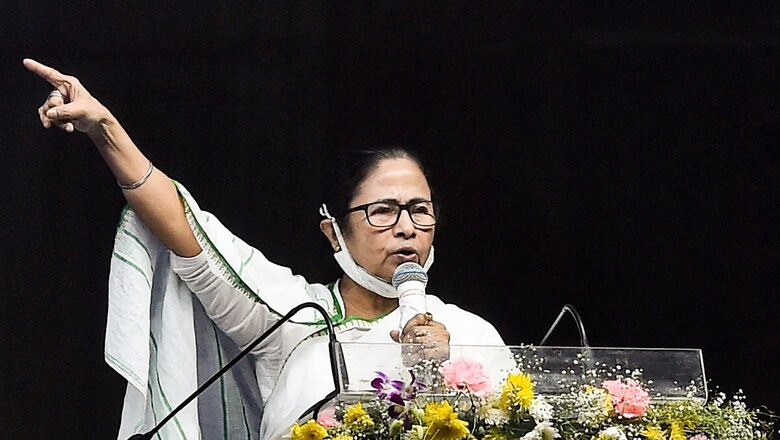
views
Would Mamata Banerjee be the Opposition’s leader of choice for the big 2024 Lok Sabha battle? The success of May 2 is grand by any yardstick. Pitted against the might of invincible duo of Prime Minister Narendra Modi and Home Minister Amit Shah, Mamata Banerjee exhibited tremendous grit, acumen and leadership qualities to upstage them and dozens of union ministers, poll strategists, mavericks and turn-coats to record an emphatic victory.
Mamata Banerjee’s class is permanent. On Friday, 13 May 2011, she had ‘liberated’ Bengal from the world’s longest democratically elected Communist government. It was in the making for several years, but from 1977 till 2011, the Left parties had won every Assembly election.
After 2011, Mamata Banerjee, popularly addressed as ‘Didi’, kept on winning a bulk of parliamentary, Assembly and municipal level seats even as Narendra Modi emerged as an iconic political figure across the length and breadth of the country. Bengal remained aloof and somewhat cold towards Modi and his brand of politics. Bengal Verdict 2021, therefore, is significant on many counts. The opposition, federalism and sub-nationalism live to fight another day. Combined with M.K. Stalin’s spectacular success in Tamil Nadu and Left’s first-of-its-kind return to power in Kerala, the scattered opposition has understood that Narendra Modi-Amit Shah and the BJP can be beaten, first in states and then Delhi.
Support from Nehru-Gandhi Family
That’s where the Nehru-Gandhi family comes in. Between now and 2024, Sonia and Rahul Gandhi have an option to extend tacit support to Mamata, a former Congressperson who still flaunts Rajiv Gandhi’s portrait at her place of work. Congressmen of all hue and shade have an understanding that if Mamata Banerjee or any regional leader is to be pitched up for 2024, Sonia Gandhi alone has the political capacity to get them a good deal whenever any fruits of labour materialize.
As I have been arguing in many write-ups, Sonia Gandhi has the flexibility to stoop, bend and negotiate from a firm position. In any case, Sonia, Rahul and Priyanka are not seen as power wielders but trustees of power. It is a fact that a member of the Nehru-Gandhi family has not been a minister since 1989 but the Nehru-Gandhi family’s hold over the party and in the national political affairs has not diminished.
Mamata Banerjee could join the league of Chaudhary Charan Singh, Chandrashekhar, P.V. Narasimha Rao and Manmohan Singh, who became prime ministers with the support of the Nehru-Gandhi family.
Giant-Killer Walks out of Congress
Born on January 5, 1955, Mamata Banerjee has lived a remarkable story of grit and determination, in which she rose from being an ordinary Congress worker to a powerful leader dwarfing other towering leaders of Bengal, such as Jyoti Basu, Siddhartha Shankar Ray and Pranab Mukherjee. She first rose to prominence when Rajiv Gandhi appointed her as the general secretary of the Indian Youth Congress. In 1984, Mamata Banerjee became a giant-killer when she humbled Somnath Chatterjee of the Communist Party of India (Marxist) (CPM), defeating him for the Jadavpur Lok Sabha seat. A defeat in 1989 forced Mamata to shift to the Calcutta South seat, getting elected six times to Parliament. She served as India’s union minister for railways twice, and was the first woman to take charge of that office.
Rajiv’s assassination in 1991 left Mamata without a powerful patron. She was denied the office of Bengal Congress chief in spite of having the numerical strength in the intra-party polls. In 1991, she fractured her head in an attack by a CPM goon Lalu Alam. The incident took place at the Hazra crossing in the southern part of Kolkata when Mamata was leading a Congress rally. Two years later, she was physically thrown out of Writers’ Building, the Bengal state secretariat, by the police for protesting in front of then chief minister Jyoti Basu’s office. Both incidents left a deep impact on her and strengthened her resolve to throw out the Left from Bengal.
During the Sitaram Kesri era when Pranab Mukherjee was acting as the high priest of the Congress, Kesri tried persuading Mamata to ‘go slow’ against the Left, but she openly accused Sitaram Kesri of behaving like a stooge of the CPM. This was the time when the Congress was supporting H.D. Deve Gowda’s government at the Centre of which the CPM was a part. Mamata became a rebel after her claim for a party post was denied again. Interestingly, Mamata had proposed a mahajot, or a grand alliance, against the Left but the Congress leadership rejected it on grounds that it would imply the party aligning with the right-wing BJP, which was then a minor force in Bengal.
Holding a Master’s degree in Islamic History and a law degree from the University of Calcutta, Mamata is considered a firebrand politician. Author Sagarika Ghosh described her as India’s Lech Walesa and remarked once that while Mamata was a home-grown anti-Communist hero, ironically her own image was that of a Leftist.
Mamata Banerjee left the Congress in 1997 to form the All India Trinamool Congress (TMC), promising to end the CPM’s rule and adopting the slogan, ‘Now’s the time’, a slogan that was illusory for years but finally came true in 2011. She fell out with the Congress because of P.V. Narasimha Rao and Sitaram Kesri’s inability to give her a ‘free hand’ to take on the Left in Bengal. These Congress leaders made a tactical error in relying more on Pranab Mukherjee than Mamata Banerjee when it came to making strategic decisions about Bengal politics. In fact, the entire Mamata Banerjee story during the 1990s, including her exit from the Congress, had Pranab Mukherjee’s stamp all over it. Pranab Mukherjee all along had little or no influence at the ground level in Bengal.
Interestingly, Mamata continued to have cosy ties with Sonia Gandhi. Sonia may not have played any effective role in Mamata’s 2011 victory, but Mamata was quick to pay a visit to 10 Janpath days after her 2011 win. The bond between the two went far deeper than political interests demanded. Those who saw Sonia eagerly embracing Mamata Banerjee on May 17, 2011 were reminded of a similar one 12 years ago, on October 14, 1999.
Moments after Mamata Banerjee had been sworn in as an NDA minister, on the spur of the moment, she strode straight towards Sonia Gandhi, seated in the front row in the forecourt of Rashtrapati Bhavan. The two of them hugged before the startled eyes of Prime Minister Atal Bihari Vajpayee, L.K. Advani and others. Then Sonia did her own impromptu act. “Congratulations,” she said, “but will you come back?” Without a doubt, both realised the invite was just an emotional gesture, and a moist-eyed Mamata gently turned away, and Sonia was not expecting a response either.
No Looking Back
There was no looking back for Didi since then, although some failures and disappointments were in store. In early 2001, she walked out of the NDA cabinet and allied with the Congress for the state Assembly elections to topple the Left Front government, but failed as the alliance won only 86 seats. In the 2004 Lok Sabha elections, she was the only Trinamool Congress member to win a seat from Bengal. In 2006, the Trinamool Congress could win only 30 seats in the state Assembly election. On August 4, 2006, she hurled her resignation paper at the deputy speaker Charanjit Singh Atwal in the Lok Sabha as her adjournment motion on infiltration by Bangladeshis in Bengal was not allowed.
In 2007, Mamata launched a campaign to stop a chemical hub from coming up at Nandigram in East Midnapore district. Fourteen villagers were killed in police firing. The Trinamool Congress staged blockades, protests and strikes. The Left Front government shelved the proposed chemical hub project. Mamata Banerjee gained politically from Nandigram and the TMC’s performance improved in the panchayat elections in 2008. Thirteen years later, the spotlight is once again on Nandigram.
Mamata always considered Rajiv Gandhi her mentor and kept Rajiv’s portrait behind her work desk. In her victory speech on May 13, 2011, Mamata remembered Rajiv Gandhi’s belief that she would be able to dislodge the Marxists from power one day. Addressing a huge gathering of supporters outside her Kalighat residence, Mamata Banerjee termed her win a victory of democracy, of ‘maa-maati-manush’ (mother, land and people).
What Sets Mamata Apart
Biographer Monobina Gupta in her book Didi – A Political Biography points out Mamata’s trademark simplicity as one reason for her immense popularity among the masses. The white sari with a thin, coloured border, the hair pulled back into a bun and the rubber slippers helped Mamata manoeuvre an environment dominated by the media. Where Narendra Modi and Amit Shah used power shuttling between Delhi and Bengal almost at will, Mamata walked and then campaigned on a wheelchair, sweating, meeting people, shaking hands, realizing perfectly well the ‘blood, sweat and tears’ impression that it would create.
Monobina Gupta maintains that Mamata does not fit the mould of the stereotypical respect-worthy ‘good, maternal, married’ Bengali woman which the CPM or the BJP would have admired. According to Gupta, Mamata’s lower-middle class origins, her abrasive, forthright style and jarring and unpolished language remove her from the realm of the genteel ‘bhadramahila’. Her status as a single woman also makes her an object of salacious ridicule and gossip. Till the Singur and Nandigram movements exploded in the CPM’s face, Bengal’s middle and upper middle classes were distinctly uncomfortable with Banerjee’s lack of grace, her dress sense, and her subaltern style and syntax of communication.
Mamata Banerjee has authored 27 books and is a poet. She tends to address issues of gender, class, caste, and religion through the binary lens of good and evil. In Manabik, the Trinamool chief and author tries to justify an old axiom that women themselves are their own enemies. She claims that many upper class women abuse their independence by living recklessly and destroying their families.
When incidents of intolerance had increased in the country, Mamata Banerjee tried to champion the cause of liberal values and creative freedom. Apart from attacking Prime Minister Narendra Modi and the Sangh parivar, Mamata had reportedly advised actors Shah Rukh Khan and Amitabh Bachchan to settle down in Bengal and fight the battle against the forces of division together.
During the 2017 Kolkata International Film Festival, Amitabh Bachchan was heard requesting the chief minister, Mamata Banerjee, not to invite him for next year’s inaugural ceremony as he had been the chief guest for several years in a row and had run out of things to say. But Didi, a woman not easily swayed, not even when the request comes from India’s biggest movie star, announced that Jaya Bachchan would be booked forever for the film festival. Little wonder then that Jaya was a visible, spirited campaigner for Mamata Banerjee, defying her husband’s reluctance to exhibit anti-BJP colour.
Read all the Latest News, Breaking News and Coronavirus News here. Follow us on Facebook, Twitter and Telegram.











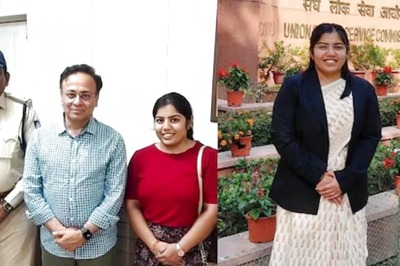

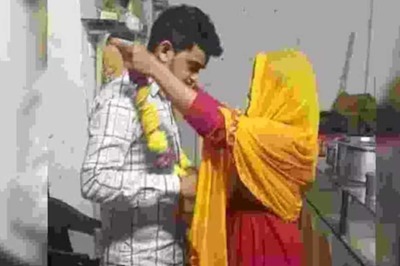



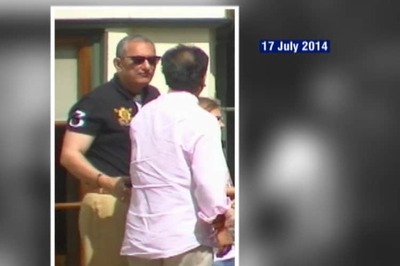
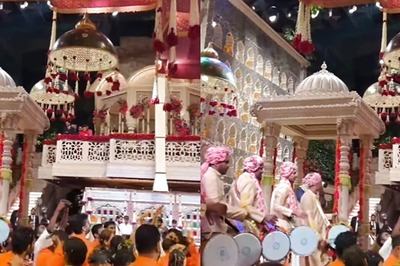
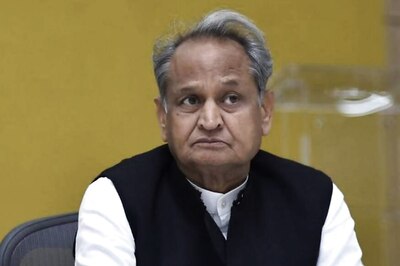
Comments
0 comment